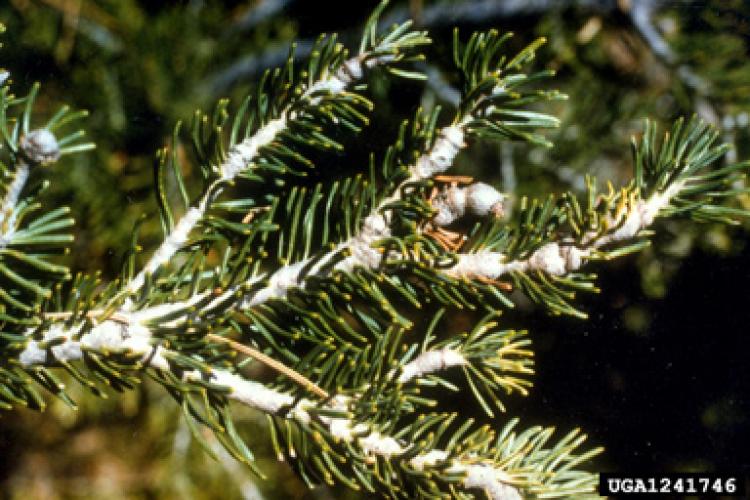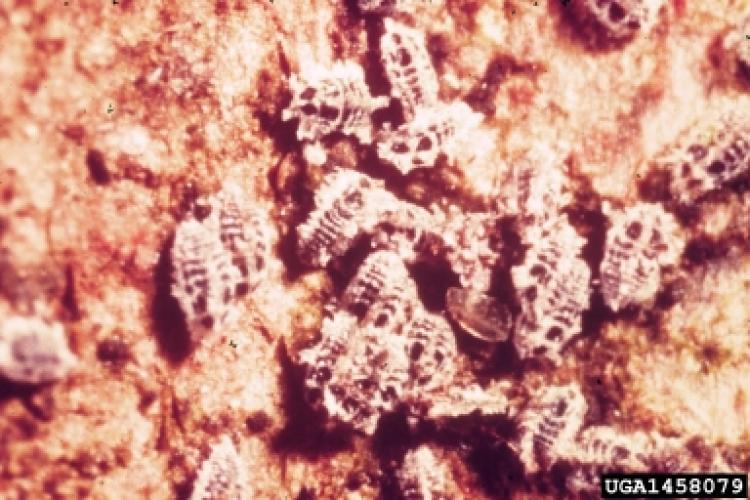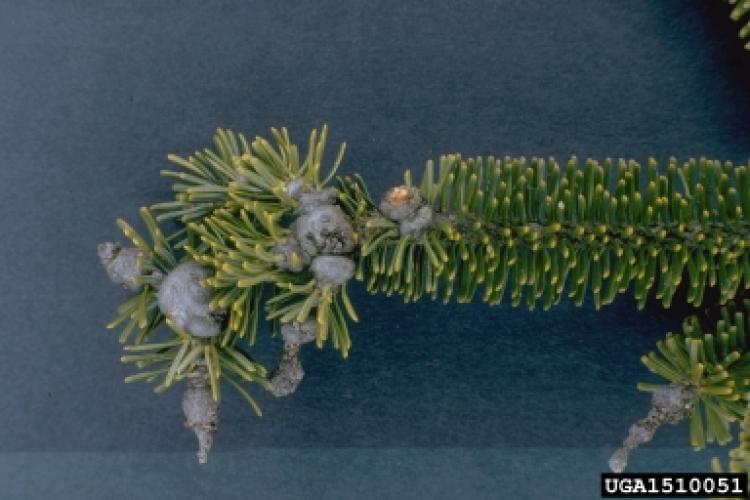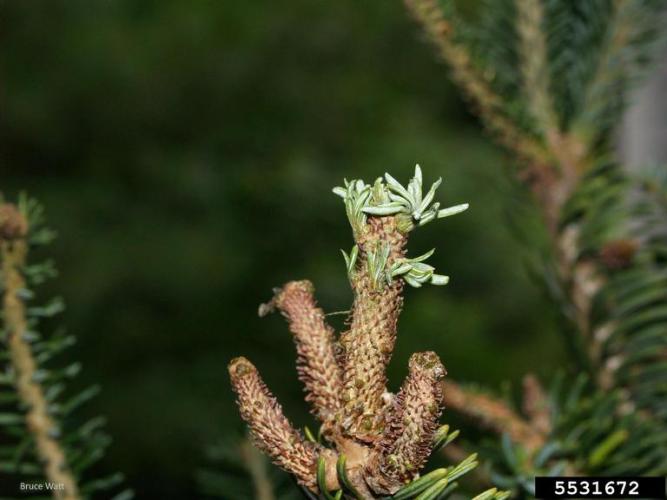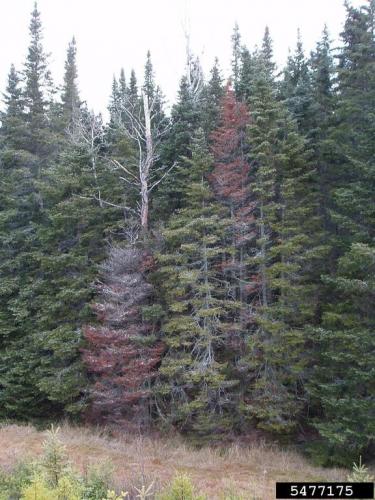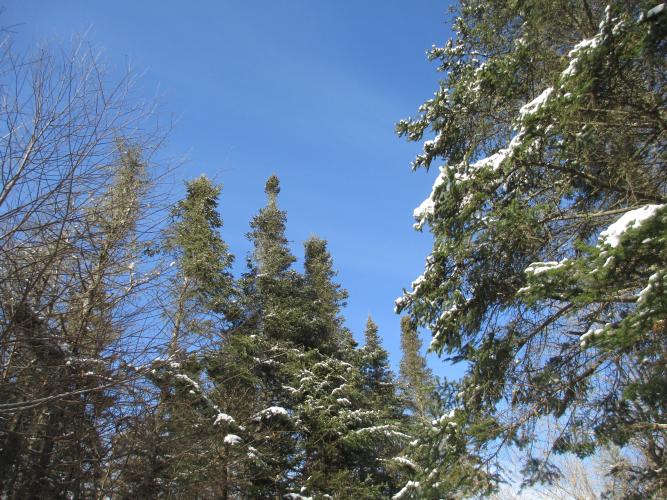Balsam Woolly Adelgid
Identification
Balsam woolly adelgid is an insect that affects true fir trees such as the balsam fir. The insect is tiny, only visible on its host as a white, wooly spot.
Signs and Symptoms
- Stunting of the terminal growth
- Swelling around buds and branch nodes
- Retarded growth
- “Fiddle-shape” to the tree crown
- Foliage yellowing to red to brown
See image slideshow above for signs and symptoms.
Biology
Origin
Balsam woolly adelgid is native to central Europe and was brought to the northeastern US around 1900, most likely on infested nursery stock. The insect was found on the West Coast in 1929 and in the southeastern US in the 1950’s. The insect is now common throughout the native range of true firs in eastern North America and along the Pacific West Coast.
Habitat
True firs are the only known hosts of the balsam woolly adelgid (BWA). BWA occurs on balsam fir in the northeastern Unites States and Maritime Provinces of Canada, bracted balsam fir and Fraser fir in the Appalachian mountains, subalpine fir in the western United States, and Pacific silver fir and grand fir in the Pacific Northwest.
Life Cycle
BWA populations in North America are composed entirely of females. The males that are needed to complete the life cycle are not produced because the alternate host isn't present.
BWA overwinters as an immature nymph. Nymphs mature into adults in March or April. As the nymphs mature, they get plump and produce a wooly coating of wax to protect themselves from predators. This covering completely hides the adults from view. Eggs are laid in a clutch behind the female. In the lab, females have produced up to 200 eggs. This number is presumably much smaller in nature.
Crawlers hatch from the eggs within a month. Crawlers seek out a suitable site to feed (if they don't they will die) and they never leave this site again. Crawlers molt into nymphs and sink their feeding tube into the bark of the tree. Once the insect is back in its adult stage, it will lay eggs in that same spot.
During the growing season, it takes about one month for nymphs to molt into adults. BWA may have two to the generations per year, depending on temperature. At any given time during the growing season, you may find all of the life stages of this insect: egg, crawler, nymph, and adult.
Ecological threat
The introduction of balsam woolly adelgid has caused a reduction in tree species diversity and age structure in forests across the United States. This has had a cascading effect on species that depend on firs, such as moose, snowshoe hares, and songbirds for food and habitat.
Several species of insect predators have been introduced into North America from other parts of the world, primarily Europe. These include 3 beetles - Laricobius erichsonii (Rosenhauer) (Derondontidae); Pullus impexus (Mulsant) (Coccinellidae), and Aphidecta obliterata (L.) (Coccinellidae); and 3 flies - Aphidoletes thompsoni Mohn (Cecidomyiidae), Cremifania nigrocellulata (Czerny) (Chamaemyiidae), and Leucopis obscura Haliday (Chamaemyiidae).
Trees themselves can respond to BWA attack by forming patches of a wound layer in the bark that is impermeable to insect attack. Cold weather has also proven to be effective in managing BWA populations.
Vermont Distribution
Balsam woolly adelgid has spread throughout Vermont.
Citations
Photo Credit
Bruce Watt, University of Maine, Bugwood.org
Ladd Livingston, Idaho Department of Lands, Bugwood.org
Leslie J. Mehrhoff, University of Connecticut, Bugwood.org
North Carolina Forest Service, Bugwood.org
USDA Forest Service Region 8, Southern USDA Forest Service, Bugwood.org
information credit
North Carolina State University
